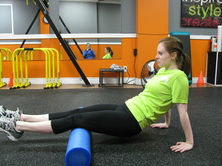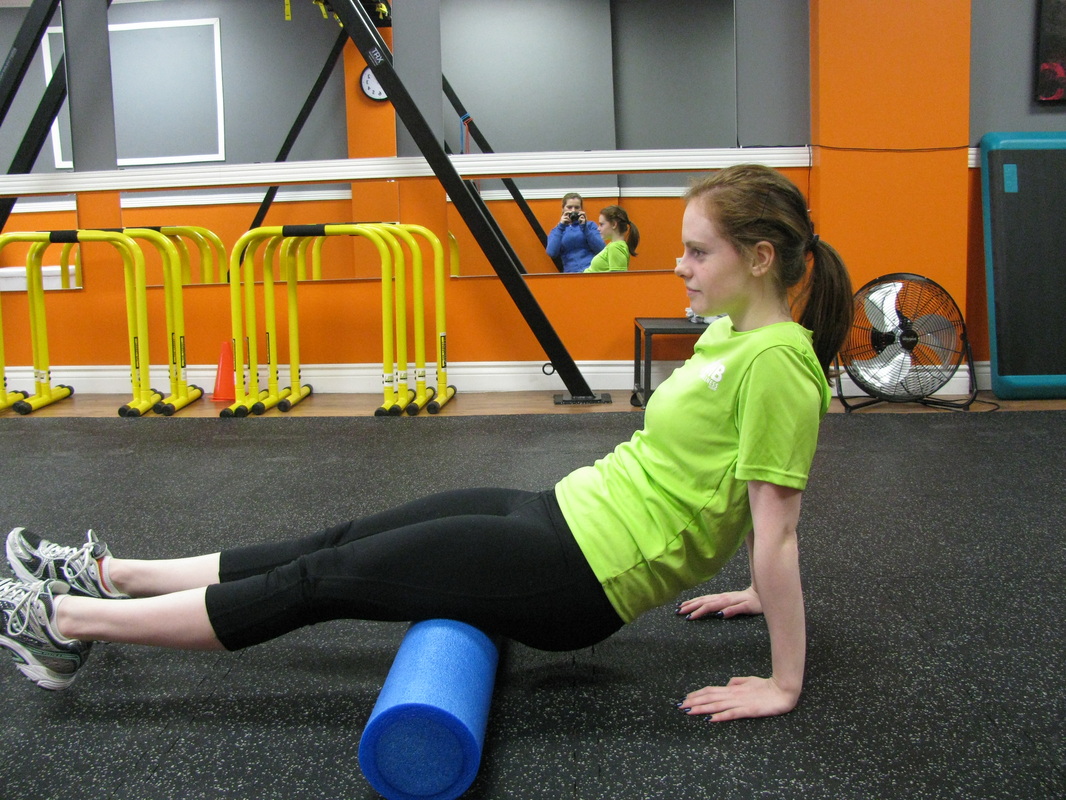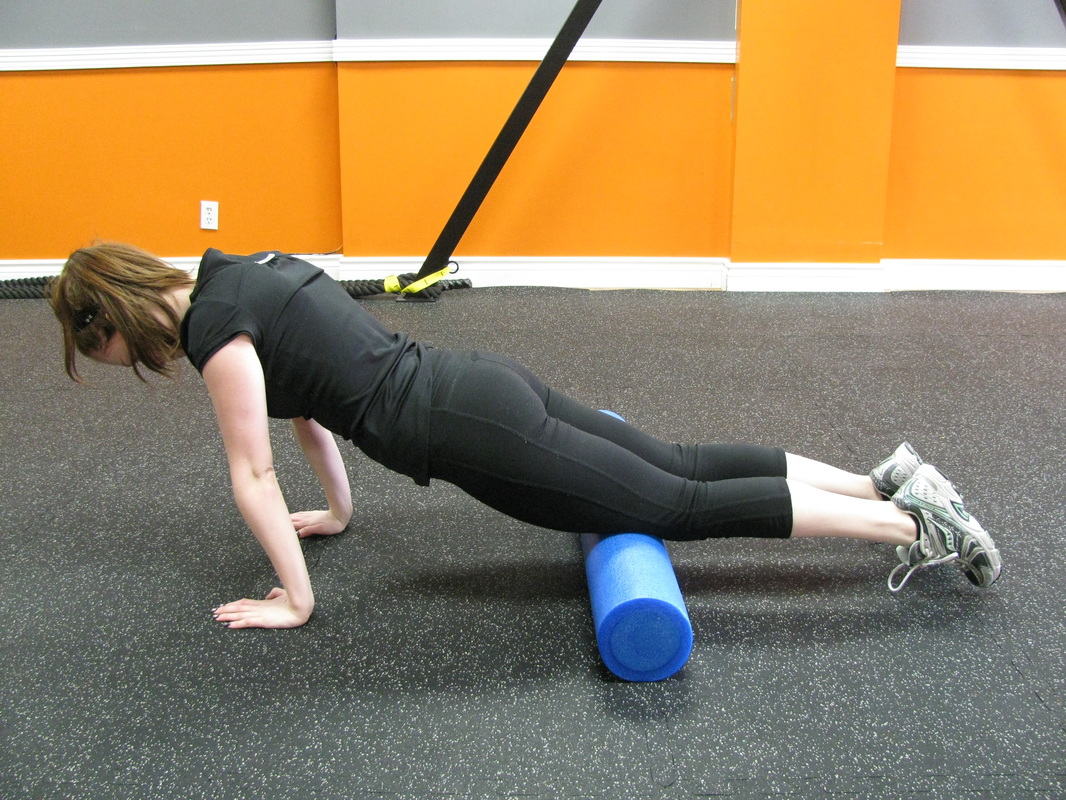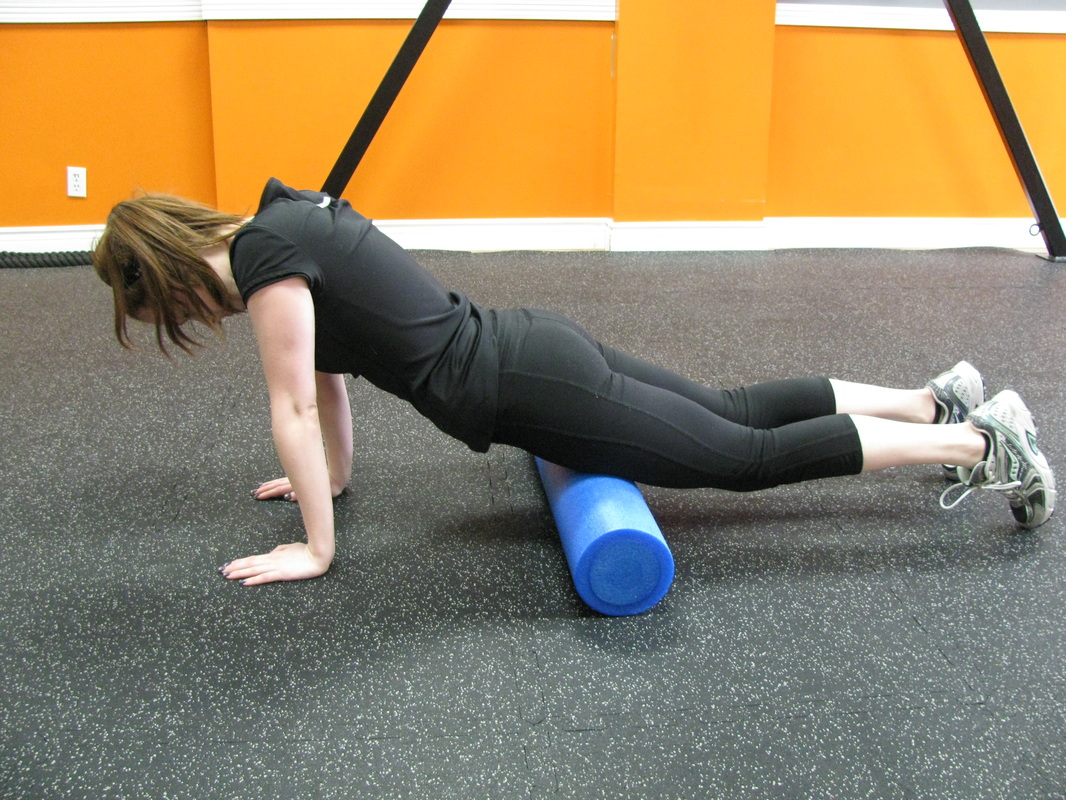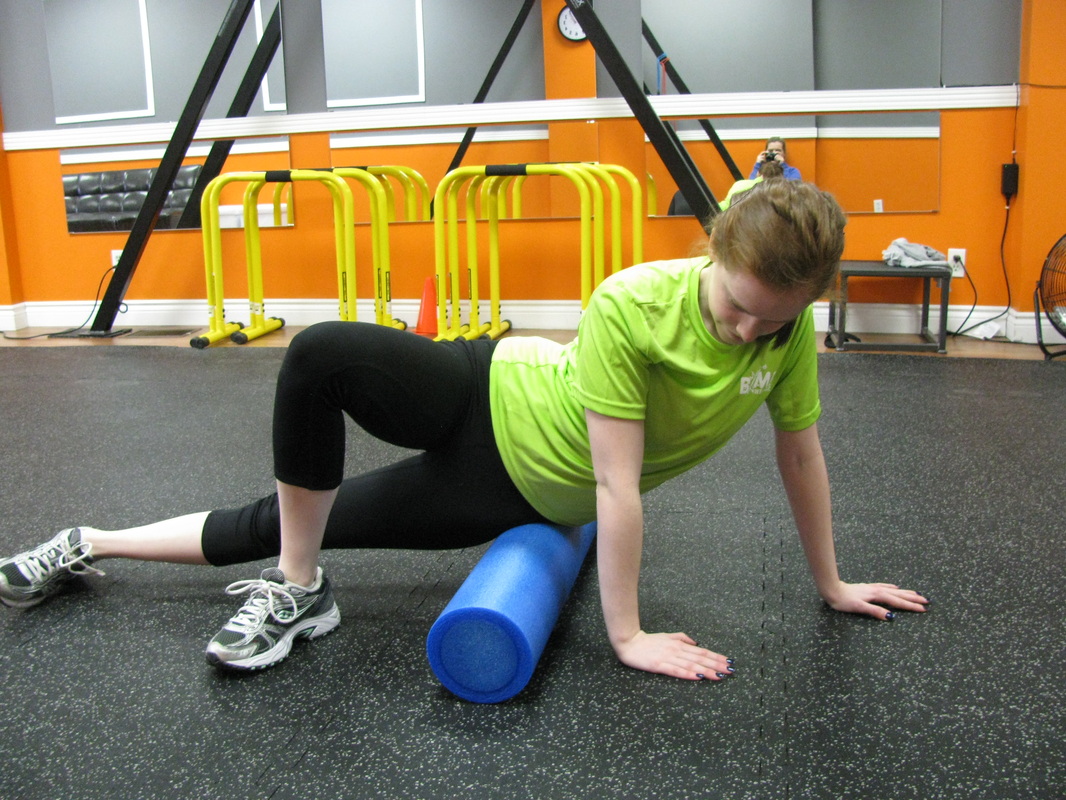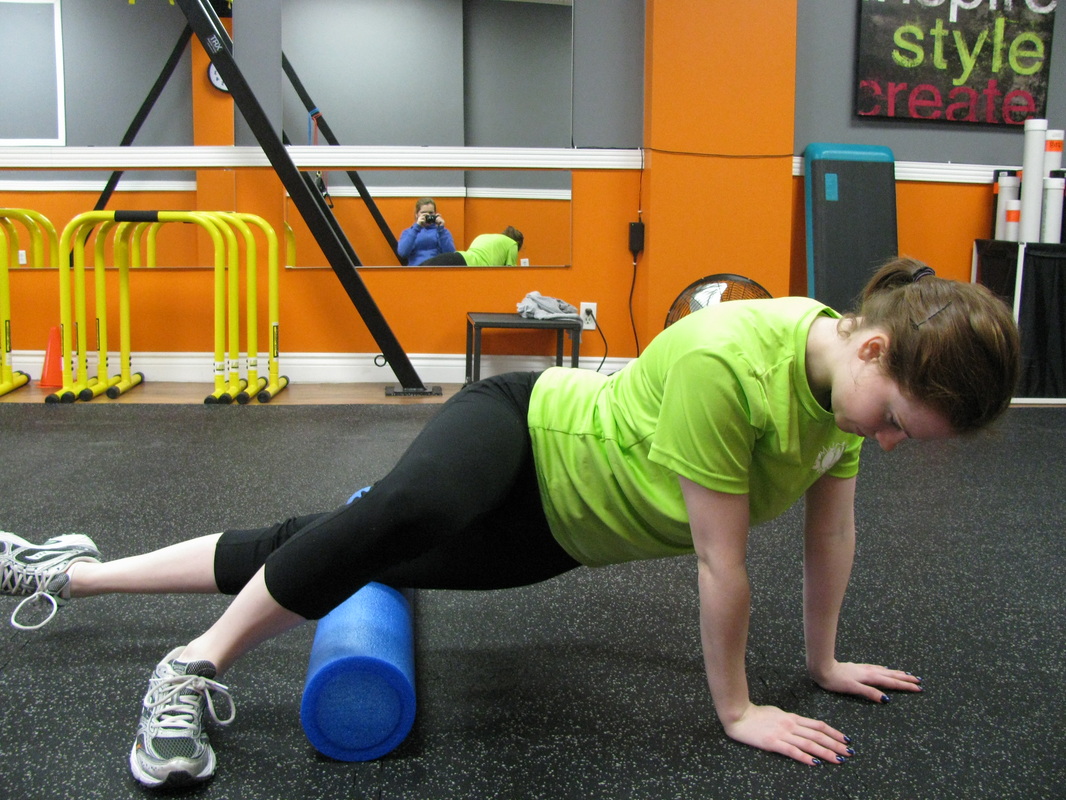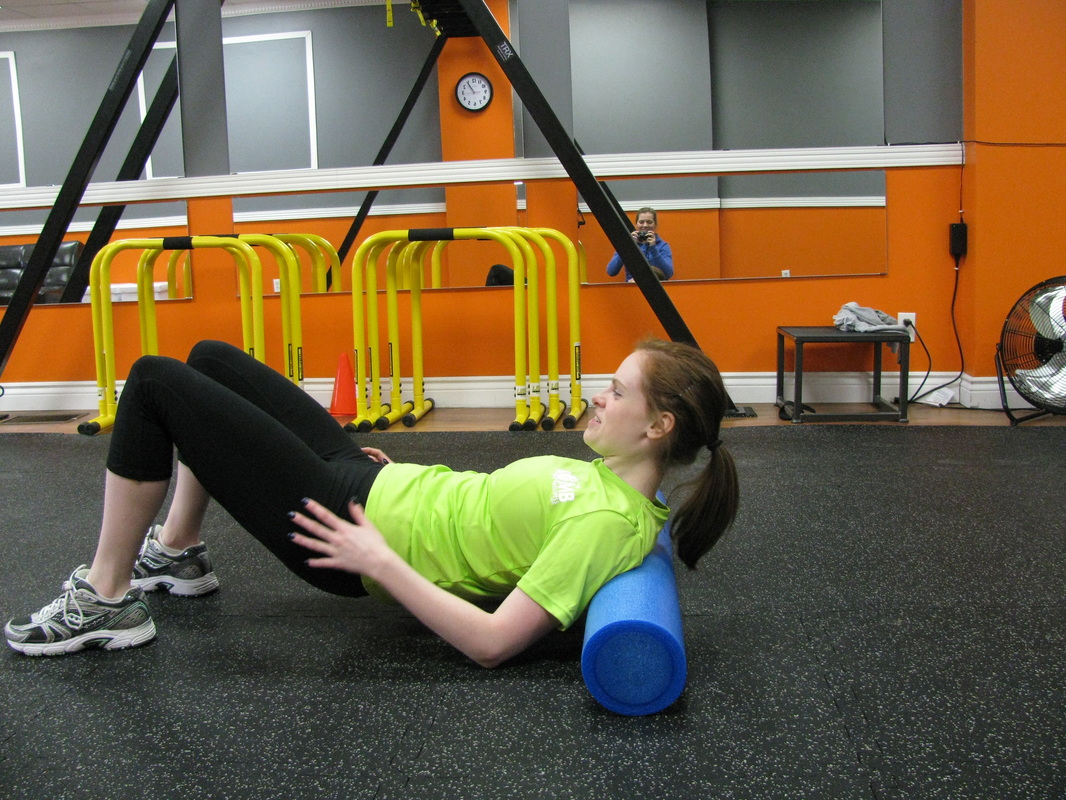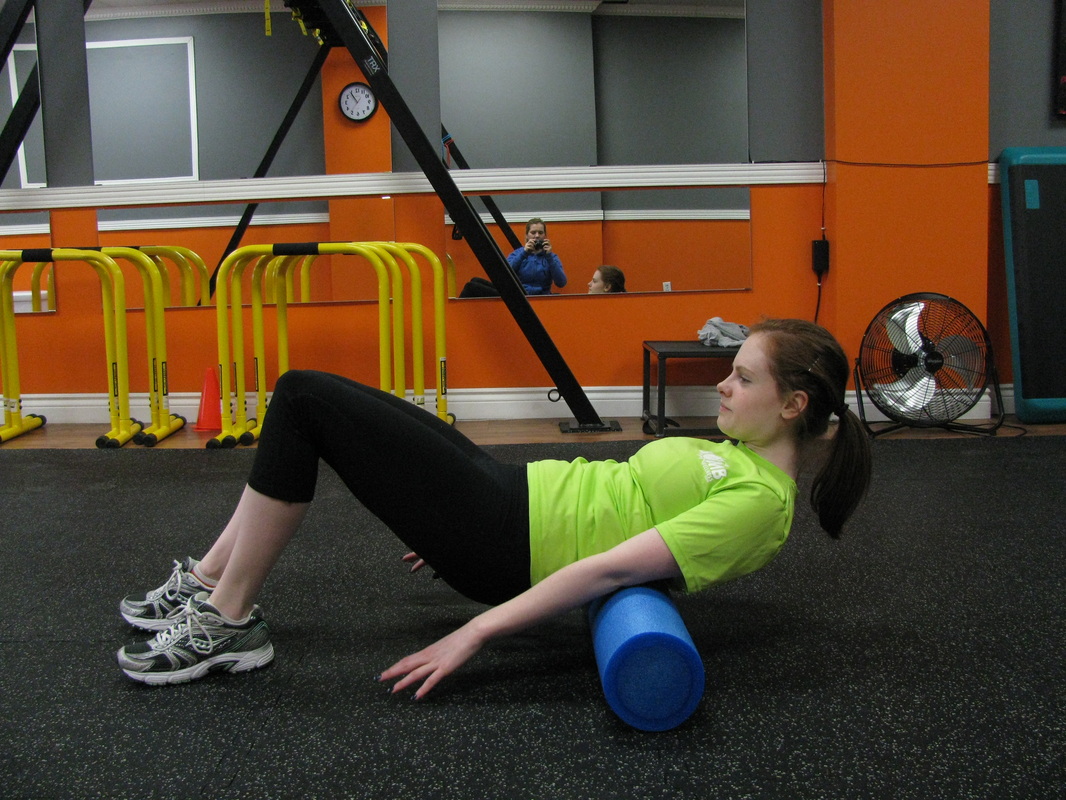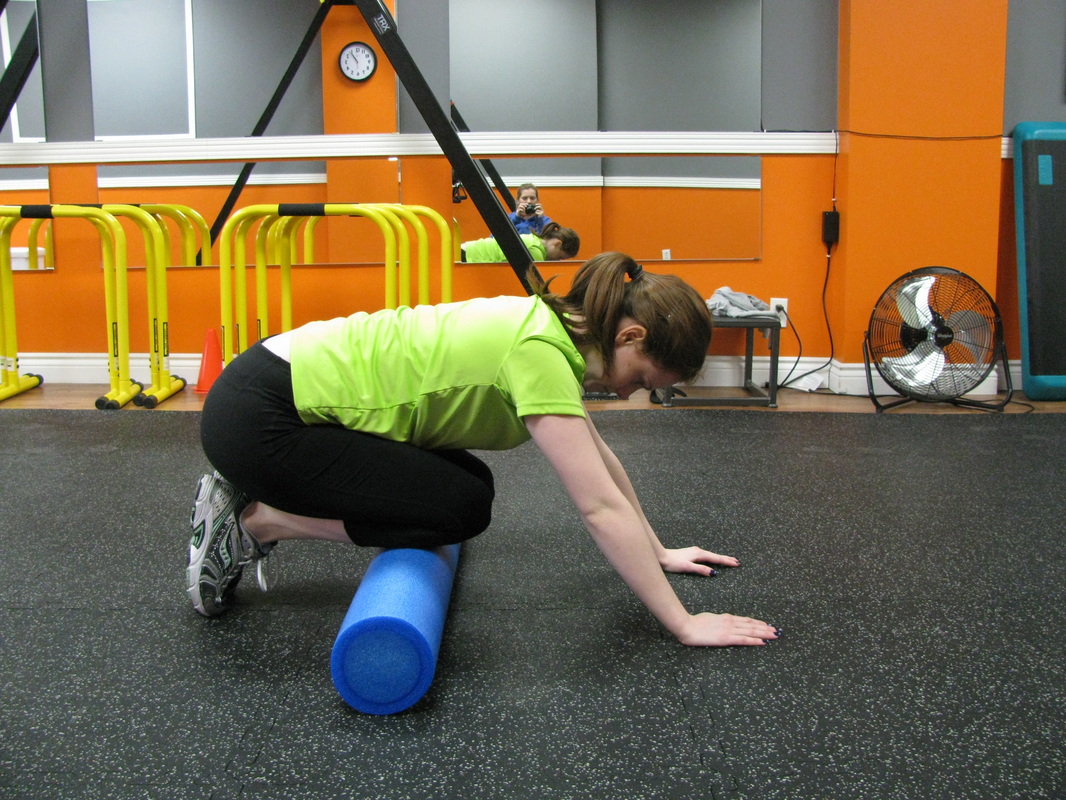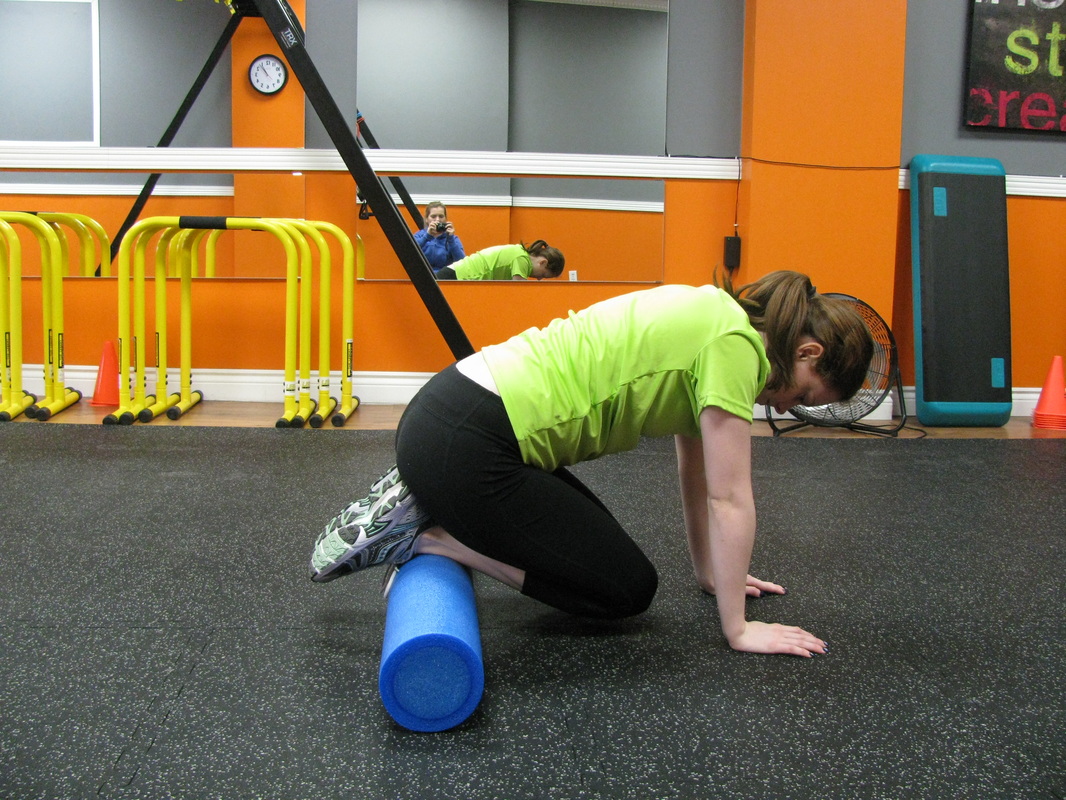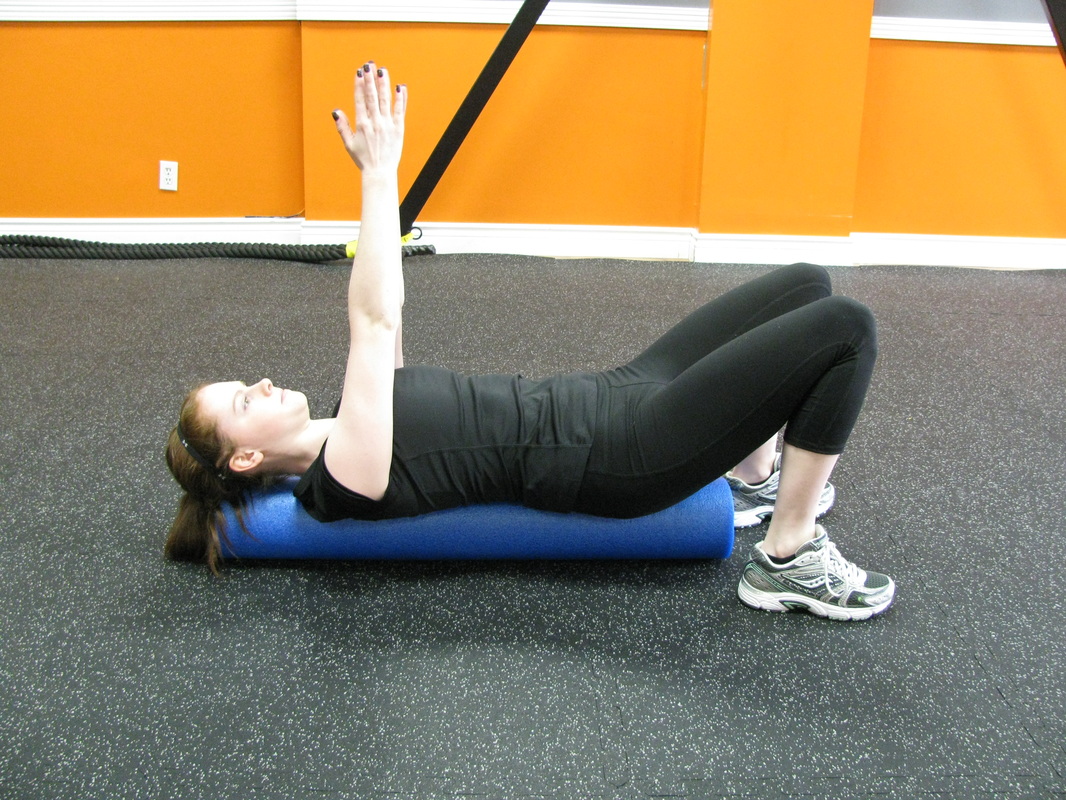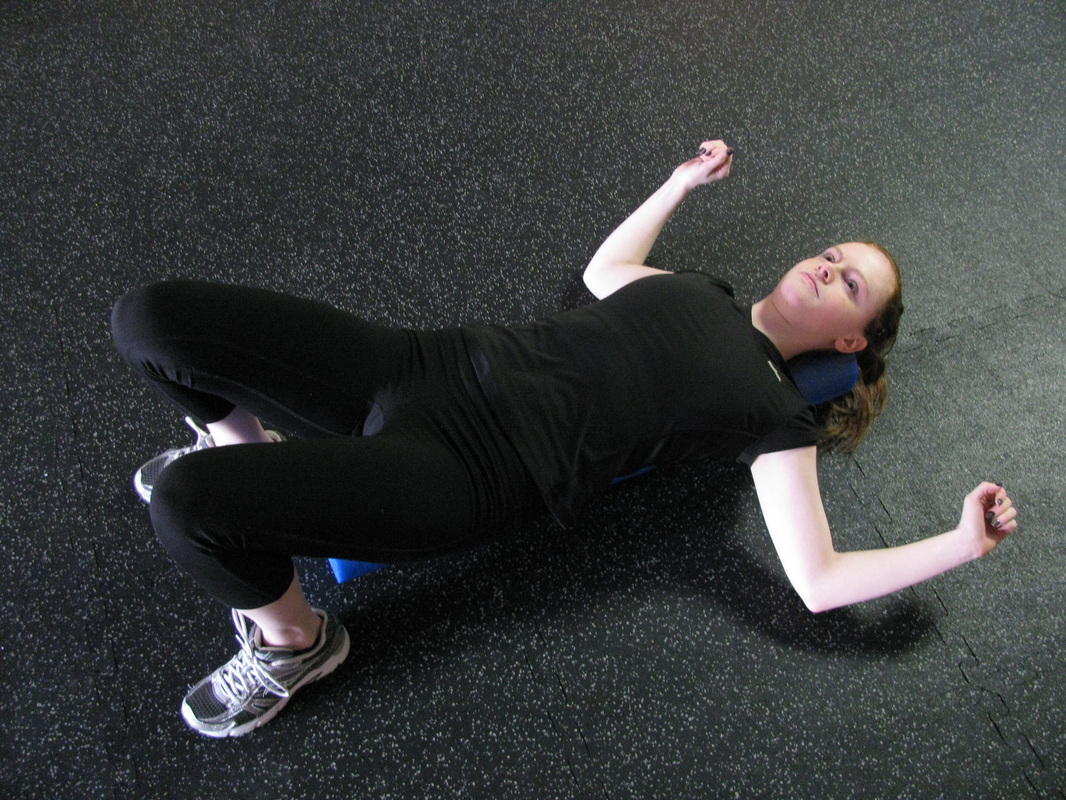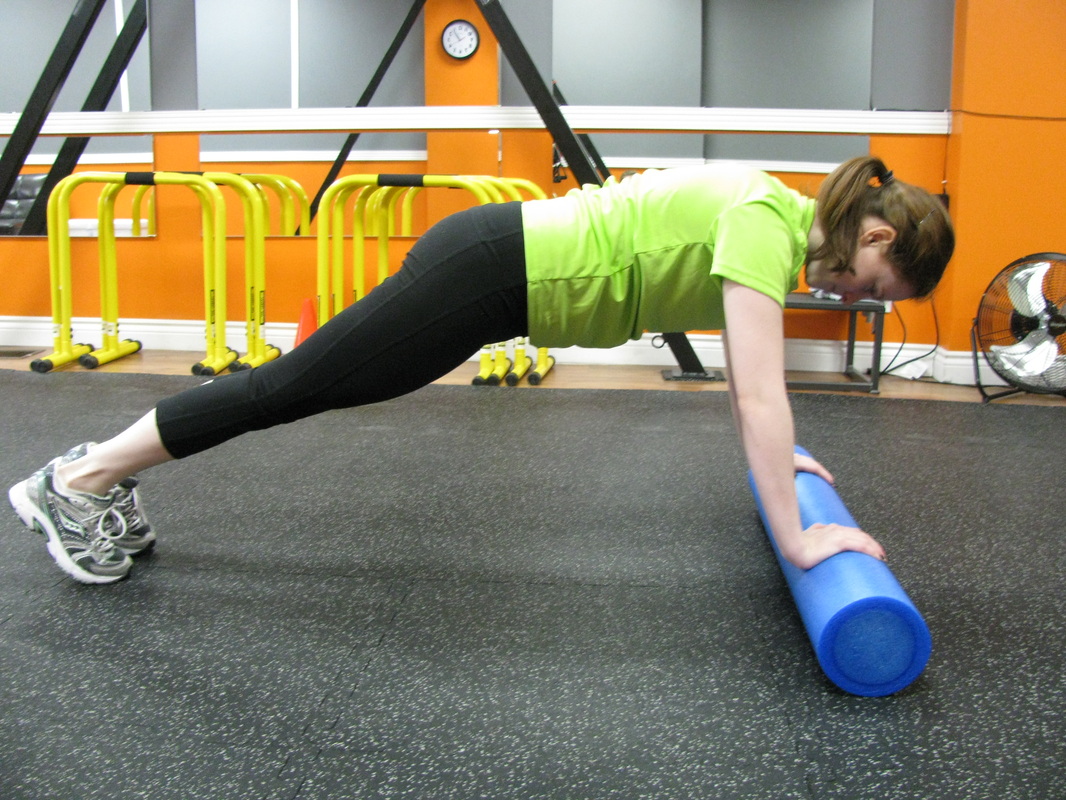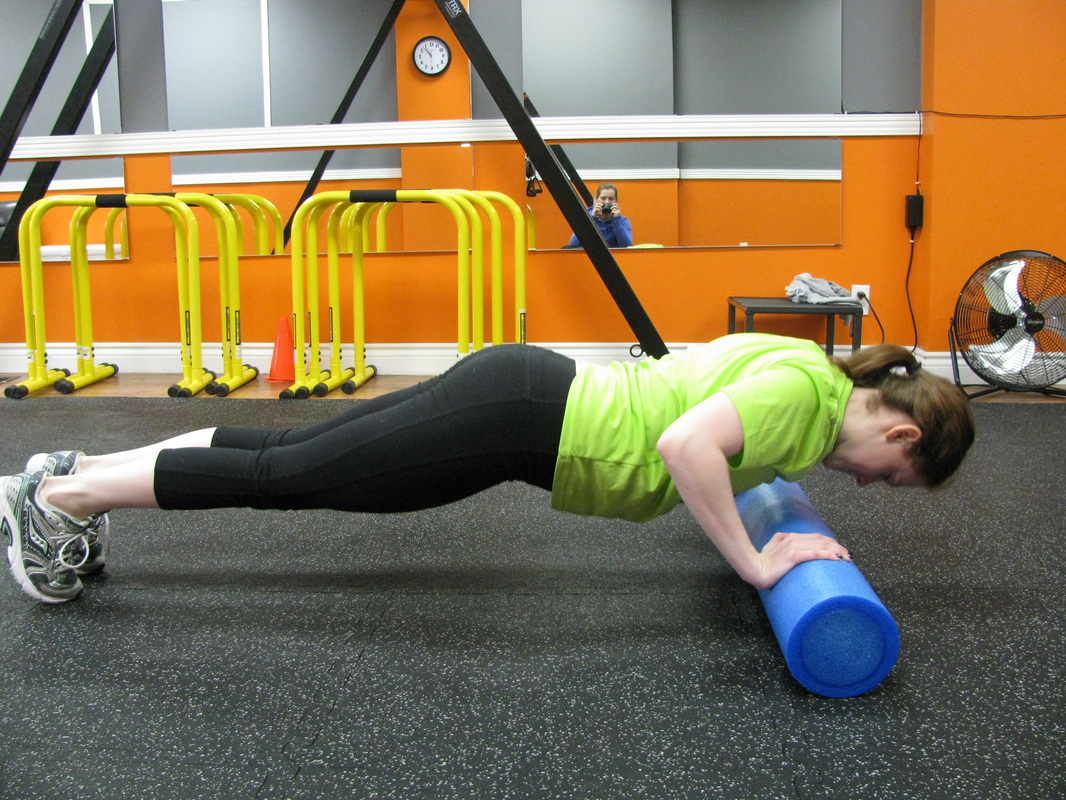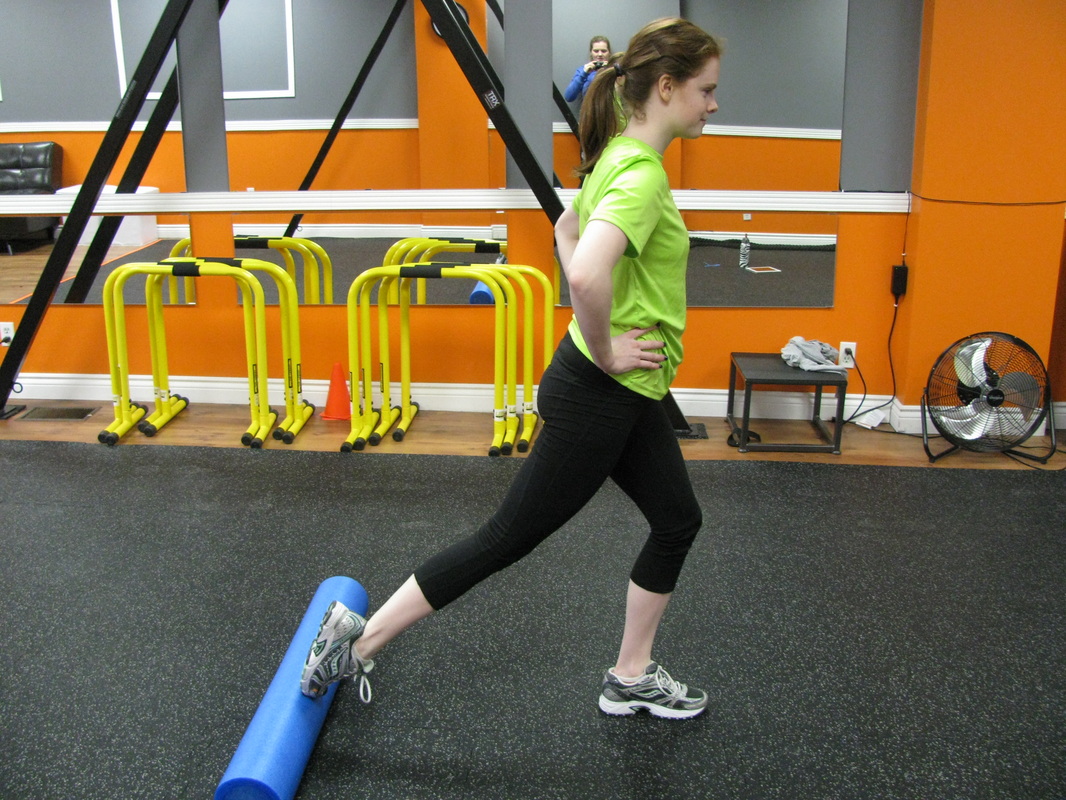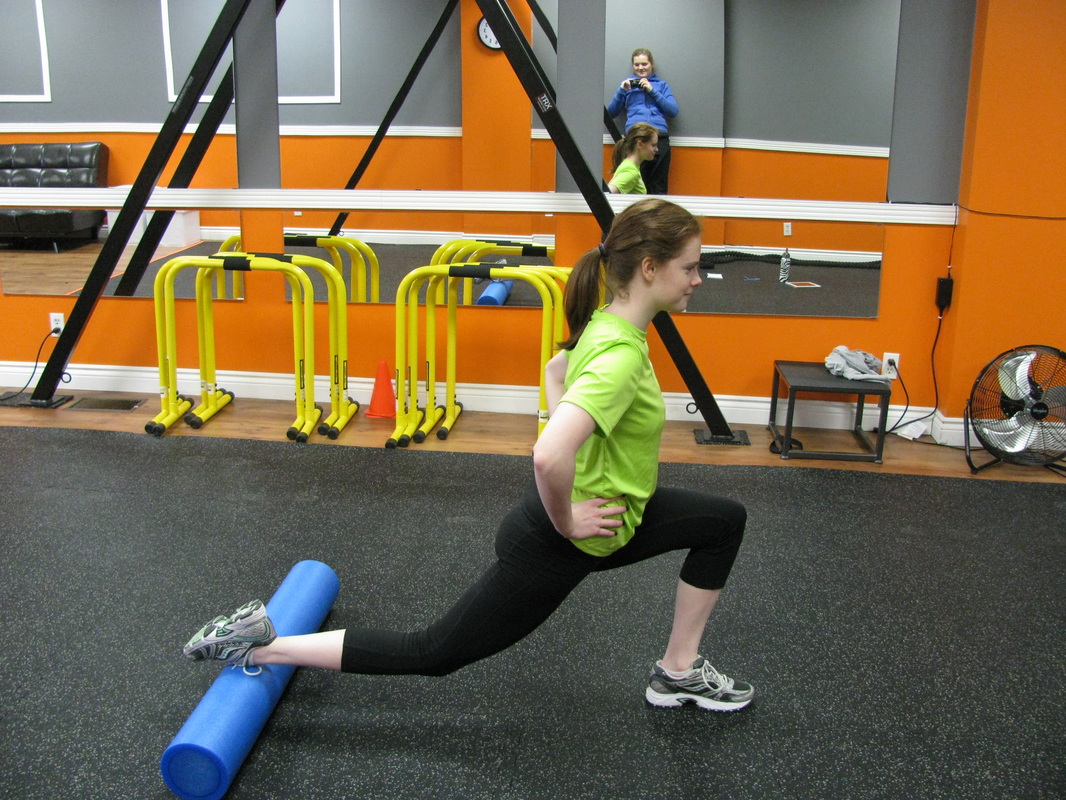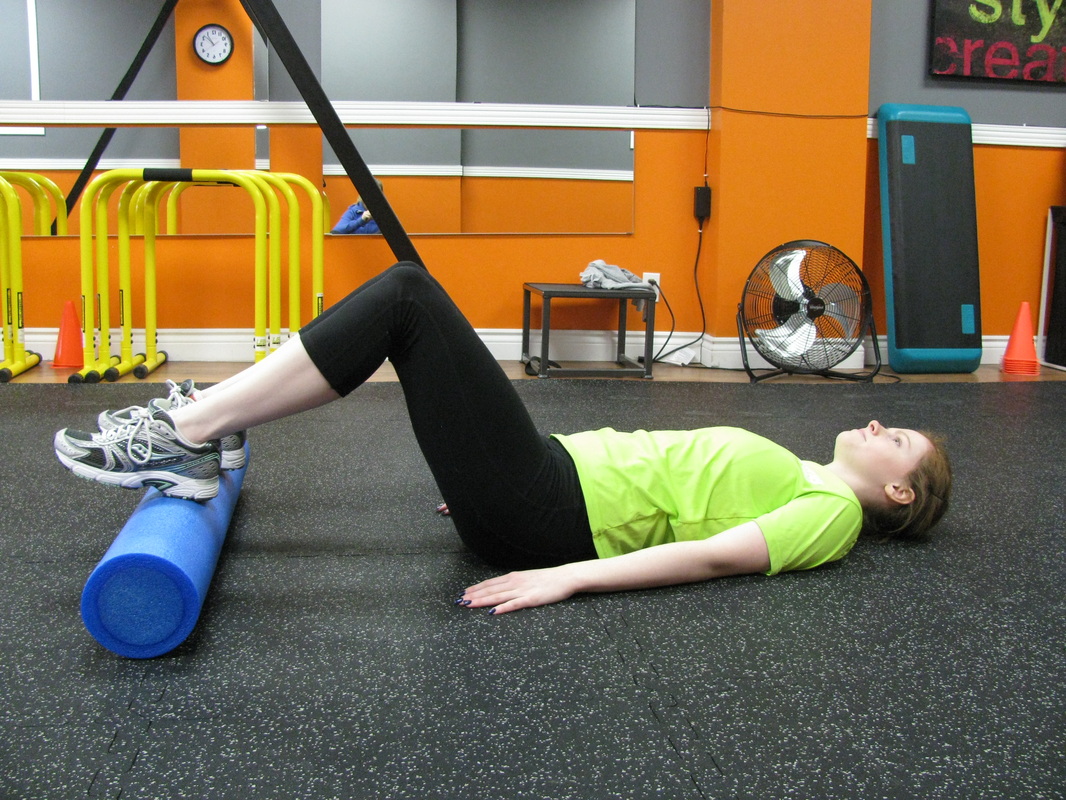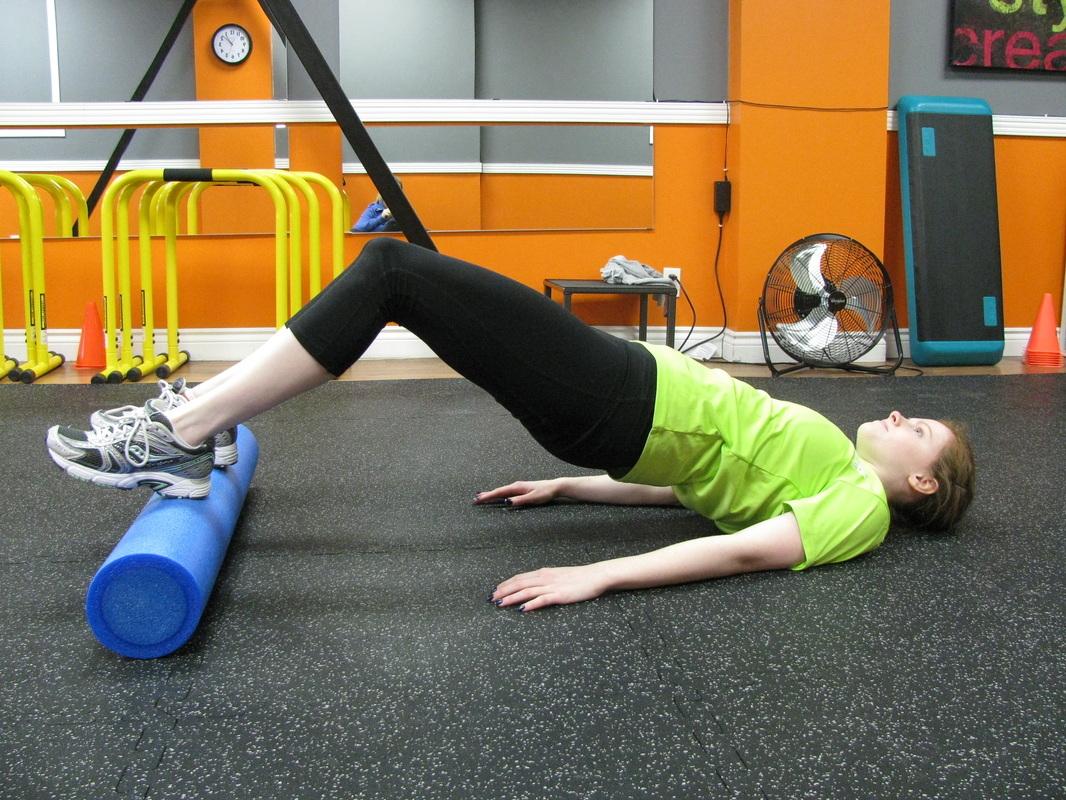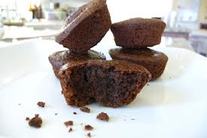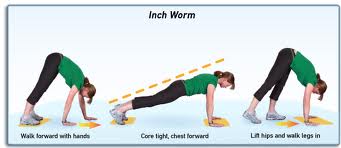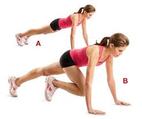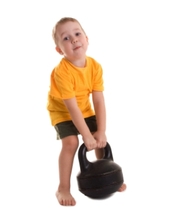 I've read a few great articles on kids and resistance training recently, explaining why we shouldn't be afraid of letting our children participate in resistance weight training. Bones across the body mature at various stages of our childhood, and young adult life. Resistance training increases muscle size and strength, and will help protect the child from injury. Resistance training can also be used as a way to rehabilitate injuries and increase certain sport performance. Careful resistance training won't cause the growth of bones to be stunted or injured, it's the repetitive motion or traumas that most professionals see in their offices when young athletes or active people injure themselves. Resistance training is done in a controlled condition, and increased only when the child is able and feels comfortable. It is important to understand the basic body weight movement of all exercises, and obtain the strength to complete those properly first before moving on to weight loaded exercises. Before beginning, the child should have an examination of possible injury risk factors and again be assessed by a trainer. A workout should include all components of a regular workout; warm up, cardio, resistance training, making sure to work all major muscle groups, and a proper cool down. Gains in strength will generally only be seen if a program is maintained. After a 6 week break, diminishes in strength and muscle size will begin, so it is important to maintain a consistent program. Lower weight and higher reps should be focused on when dealing with children in order to avoid any unnecessary stress on vulnerable joints or body parts. Through the program their technique should be monitored to ensure the chances of injury are decreased. Kids can take part in resistance training programs as long as they are mature enough both physically and mentally. They should be able to listen to and follow instructions given by a trainer to ensure their safety, and to learn effectively. With the help of a professional children can be safe and have fun while exercising! If you want to learn more here are the links to the articles, and please don't hesitate to quiz us about kids resistance training! http://www.ericcressey.com/the-truth-about-kids-and-resistance-training http://pediatrics.aappublications.org/content/107/6/1470.full Michelle
 Everyone loves a river-sweating Cardio Blast, a muscle-burning Fighting Fit class, and an ab-grinding TRX session (right?). But how do you let muscles heal, keep working at a relatively high intensity, remain injury free, and stay focused on your goals. The answer is a great RECOVERY system. Listed below are 5 of the most common methods to keep your engine firing at 100%. Whole Foods Have a healthy snack or meal within 30 minutes of finishing your exercise. Bananas, whole grains, low-fat yoghurt, and tuna promote muscle regeneration, and faster recovery. Drink You need to hydrate, and the healthiest way is to drink water and lots of it - 8 glasses a day at least, more if you are exercising. You can take the PEE TEST to see if you have rehydrated properly. Everyone’s raving about chocolate milk at the minute. It has a good mix of carbs, protein and fat, and is better than a sports drink. BUT don’t use this as an excuse to stock up your fridge with this stuff. It should be taken moderately, and not consumed with your regular meals. Avoid vitamin water, and soda pop, as they are loaded with sugar, and you’ll pay for its short-term refreshment. Meditation Watching Honey Boo Boo barf on the floor after a cookie binge is not positive “mental stimulation”, it’s just mental, (as are the people who watch it!). Positive mental, and spiritual stimulation in this case can be opera music, a Yin or Restorative Yoga class, reading a book, lying in the middle of the quiet ocean on a yacht. Find a space where you can zone out, and relax the mind. If you need help, there are plenty of free meditative audio readings floating around the internet. Sleep The best of all recovery methods, and you probably aren’t getting enough of it! Proper sleep increases energy, performance, and focus levels. It also decreases the feeling of fatigue, and stress. Get 8 hours each night, and try and wake up at the same time every morning regardless of when you go to bed. Your body loves routine, which is why it’s difficult to begin exercising in the first place. Active Release (Stretching/Foam Roller) This is the physical equivalent of meditation. Stretching daily, whether you have a workout planned that day or not, will maintain and improve your flexibility. Rolling will help release tight muscles and correct any imbalances. A cheap person’s massage! You can find some awesome exercises right HERE! So there you go, the 5 best ways to recover from exercise. Don’t forget to align your recovery options with your goals. If you want to lose weight, don’t eat or drink high calorie items to recover after your next Stack Attack marathon. See you at the studio. Kevin NOTE: You’ll notice that protein shakes, and bars are not listed here. We all have busy lives, and these are a popular choice for snack/meal replacements on the go. If you can’t find the time to balance the 5 options above, be careful and read the label of ingredients. Just because it says “Protein Bar” doesn’t mean it’s good for you. Go for lower sugar, calorie & additive options.
You'll hear us harp on at the studio about the excellent benefits foam rolling has on your body. We recommend you should roll out 10 minutes before and after a workout. Fascia is a layer of fibrous tissue, much like a spider's web, that surrounds muscles. If not addressed, this web can tighten around the muscles that stunt their growth. By foam rolling regularly we keep this fascia nice and loose so that when you do workout, you get the maximum work out of that muscle. Rolling also helps correct muscle imbalances, and is great at preventing injury.
In this blog, Thalia and Michelle, show us their top 9 foam roller exercises. If you find any particular tight, or painful spots you should hold the position until you feel the muscle loosen up. If your shoulders, and elbows get sore, you can use a bolster or cushion to support you. Enjoy! Hamstring Massage Start with your foam roller under your knees, and lift up onto your hands. Roll up your hamstrings towards your glutes, and back again. | | | Quad Massage Lay face down with the foam roller just above the knee, Using your arms, move your body backwards, in turn, moving the foam roller towards the hip. Men, make sure you don't roll too far!! | | | IT Band Massage
(aka "The Screamer!") Turn onto your side, and place the foam roller near the hip. Check that your hips are stacked on top of each other. Slowly roll forward all the way to the knee, and back. | | | Back Massage Lie with the foam roller under your shoulders. Place your arms across the chest, and roll towards the hips. This targets the Erector Spinae. | | | Shin Massage Facing down, place the foam roller under your knees, heels to butt. Using your arms for support, roll forward towards your ankles, and back. | | | Chest Stretch Lay on the foam roller, face up with your neck supported. Bring your arms out to the side, and slowly try to bring them down to the floor. To make this harder, bring your arms further overhead. | | | Push Ups Place hands shoulder width apart on foam roller. Bend at the elbows to lower your chest. Squeeze your pecs together and push back to the start. The instability of the roller makes this extra tricky. | | | Lunge Place your toes of one foot on the roller. Bend at the front knee, sitting into a lunge, as the roller heads towards your shin. Push off the front heel back to the start. | | | Bridge Lie on your back with your heels on the foam roller. Lift the hips towards the ceiling, forming a straight line, knee to shoulder. Lower under control. The instability of the roller really engages your stabilizing muscles. | | |
Whether it’s already started with holiday parties invading your personal time, workout, time, and menu planning time, or you’re waiting for the big day to start the over-indulgence, that 4-5 pounds that the average person packs on over the holidays is hiding in plain sight. Here’s how you can avoid your share of the Christmas blubber in 3 easy steps:
| 1. Remember that the second bite of that sweet will taste exactly the same as the first. It used to drive me crazy when I would open a box of chocolate that my oldest sister had been into before me. I’d see little bites taken out of all of the most delicious looking chocolates and a sometimes very gooey mess left behind. While her method really ruined the surprise of what’s in the middle of the chocolate and my mom was constantly embarrassed when she offered said treats to guests, my sister got to enjoy the best of that box without eating the entire thing.
| | | 2. Do mini workouts. You’d be surprised what 5 inchworms, 3 times daily can do for you: Inchworms are a great full-body exercise that can be done anywhere (but could also very quickly remind you of just how much food you’ve been trying to cram into your stomach as it inches its way back out). A few years ago, my grandmother went more overboard than usual on the Christmas baking and stored a lot of the excess in the deep freezer beside the room I was staying in. Every time I wanted to grab one of the melt-in-your-mouth ginger sparklers out of there, I willed myself to do as many push ups as possible off the side of the freezer. For the most part, it helped me to keep the freezer lid closed.
| | | 3. Go to bed. Sleep is always an important key for weight and stress management, but this is especially true for the days leading up to the big show. When you’re tired, you make poor eating choices and rely on sugary or caffeinated foods and beverages to keep you temporarily energized. Lack of sleep can also lower your metabolism and let those holiday goodies stick to you more easily.
| | Enjoy this time with family and friends, but enjoy your sweets in moderation and stick to your daily routine as much as possible to keep yourself in check. Have a very merry Christmas and we’ll see you at the studio for damage control.
Victoria
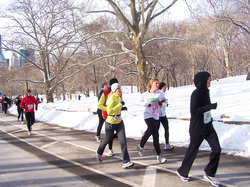 Over the last 3 weeks, our Saturday morning running group (we leave at 9:20am if you care to join!) has endured drastically different temperatures and levels of precipitation. As we move into the colder months and unpredictable weather, here are some tips for venturing outdoors for your run.
Cold Weather Running
Dressing for cold weather running can be a challenge. If you dress so that you are warm at the start of your run you will probably be over-heated by the end. When running in cold weather always remember one word - layers. The layers of clothing will keep you warm by trapping heat against your body. As you generate heat during your run you can remove layers to avoid overheating.
When dressing for cold weather running, wear either two or three layers depending upon the weather conditions. Each layer has its own purpose.
Layer 1
The purpose of the first layer is to wick moisture away from your skin. A long snug-fitting shirt is a common choice for the first layer. The best choice would be one made from a fabric that wicks the sweat away from your body.
Layer 2
The second or middle layer should insulate your body and keep you warm. This layer should be made from an insulating material such as fleece. It should also be able to absorb a small amount of moisture so that it can assist your first layer in keeping your skin dry and warm.
Layer 3
Your third or outside layer is there to break the wind and keep rain or snow away from your insulating and wicking layers. This outside layer should be made from a waterproof material such as Gortex or nylon. This outside layer includes both a jacket and running pants.
One rule of thumb when dressing for cold weather running is that you should be a bit cold when you step out the door. If you are comfortable or warm at the start of your run, you will overheat rapidly.
Dressing for cool to moderate weather (5 to 15 degrees C)
This is the most difficult weather to dress for. A single layer of clothing is the best bet. Wear either a long sleeve or short sleeve shirt depending upon the exact weather and your personal preference. Shorts are sometimes enough for these conditions while some may prefer to wear lightweight tights. Running gloves and a headband or hat will provide some added warmth, especially if it is windy. If it is raining add a water resistant outer layer and a baseball cap to keep the water off of your face.
Dressing for cold weather (minus 9 to 4 degrees C)
You will want at least two layers of clothing in cold weather. Start with a long sleeve shirt and heavy running tights. Add a water resistant running jacket for the outside layer and if it’s windy or rainy, a pair of water resistant running pants. You will definitely want running gloves and a headband or hat.
Dressing for very cold weather (Below minus 9 degrees C)
In this severe weather you will want three layers. Start with a long sleeve shirt and tights made of a wicking fabric. Add an insulating middle layer and possibly some heavy weight running pants. Use a water resistant running jacket as an outer layer. Always wear running gloves and an insulating headband or hat in the severe cold. A balaclava may be useful in these conditions to protect the skin on your face.
Source: www.runningplanet.com
Our first SOGO Active Youth program came to an end last week, and we’ve met a number of promising teenagers and found it a delight to observe their approach to fitness. The youngsters’ greatest assets are their enthusiasm, energy, and their willingness to try anything at least once! Unlike their older counterparts participating in the same classes, we noticed a big difference in the way some of our teens took part in the classes.
The major hurdle we’ve noticed with youths, in general, is a reluctance to surrender to the process and a lack of real-world guidance.
Each year modern pop-culture dictates a shorter-and-shorter attention span, ranging from restricted-length tweets to 2-second editing cuts in TV programs. Youths are becoming lazy and always looking for the next quick fix. Modern pop-culture also falsely suggests that everything should come to you quickly and at no cost… Kids are growing up now wanting to be a reality TV star just as much as a world-class athlete… they don’t want to put in the work to reap the rewards.
With regards to fitness, the younger generation look around for the cool, new, insane workouts. The ones that leave your muscles aching for weeks and claims to give you a six-pack overnight… the “300” workout comes to mind. They look for these ridiculous YouTube videos and copy them with little to no one-on-one guidance and without taking the time to learn the basics. The prevalence of injury in these cases is so high that it’s almost not even worth the benefit of the physical activity.
So what’s the solution?
Keep the effort on the process, not the outcome. Famous athletes should inspire younger generations, but what is chronically lacking in the stories of these world-class champions is their journey to the top. An inspirational performance from Usain Bolt may help spark the fire but it’s the men and women in the trenches that they see every day that must guide and mentor them through the process of reaching their full potential through hard work and dedication. Cut out that episode of American Idol and get them out to the park to run around.
While many kids won’t grow into world-class athletes, it's up to us to give them a chance. With regular physical activity, children will also learn discipline, patience, respect and how to live a healthy, active life... all the tools they’ll need to take with them into the real world (...and I’m not talking about the TV show!).
Kevin
One of the best ways of staying on track with your fitness regime is to set goals. These goals can reflect not only your desired end result, but also a pathway to get there as painlessly as possible.
More often than not, the decision to go on a diet or start exercising is a reaction to something happening in your life. Examples of this might include planning for a trip, or you or a loved one being diagnosed with an illness that is related to obesity or hypertension. It is very important that you don’t jump in with both feet and without a plan. Setting priorities or goals will help you to focus on what’s important when embarking on a lifestyle change.
SMART Goals
S – Specific. Your goal should be as specific as possible in order to be able to monitor progress. This portion of the smart goal should map out what it is that you’re trying to accomplish physically.
M – Measurable. If your goal doesn’t have some kind of number in it, consider adding one or two. Without a quantitative value, your goal may sound something like this: “I want to lose weight someday.” Add some numbers to make your goal smarter and more measurable. For example: “I want to lose 10lbs over 4 weeks.”
A – Attainable. Is this goal possible? Although the idea of losing 10lbs in one week is nice, it is neither safe nor likely. Changing your entire diet around in one day is equally as unlikely. The trick to achieving SMART goals is to pursue a gradual lifestyle change that may be made up of many small but attainable goals.
R – Realistic. Given your current circumstances, is this goal something that YOU will be able to complete? For example, if you are currently working 12 hours daily, could you commit to a two hour program three times weekly?
T – Time-oriented. Whether you are working toward achieving your goal before a specific occasion such as a wedding, or are simply trying to move toward a healthier and more active lifestyle, your goal should be set for a date in the foreseeable future. If your goal will take more than six weeks to accomplish, consider breaking it down into two or more goals that are more specific.
Some Tips:
- Make your goals SMART.
- Take time to consider the barriers to meeting your goal and how to overcome them.
- Don’t beat yourself up if you fall off the wagon for a day or two. Just remind yourself of the bigger picture – a healthier you.
- Write down your goal and share it with somebody so that you can be reminded of what it is that you are trying to achieve.
See you at the studio!
Victoria
Performing a move over and over again until you can do it perfectly sounds like it can drag and bore, just as “wax-on, wax-off” seemed to Daniel in The Karate Kid. But like that movie shows, drilling exercises has a number of benefits to satisfy your physical and mental needs.
The ability to engage all of the right muscles at just the right time takes consistent effort, but pays off with greater muscular recruitment, hormone secretion, and ultimate strength and endurance. Here are some key tips to bear in mind when learning a new exercise.
Per-fect form… Drill intelligently. Focus on every single repetition until you obtain perfect form. Use a mirror or a friend to monitor you. Whether you’re in class, or on your own, we’d rather have you do 5 perfect push-ups in 30 seconds as opposed to doing 10 incorrectly. Completing an exercise properly will reduce the risk of injury and ensure that the correct muscles are being worked.
Start Small… Think that a jump squat with med ball pass on a BOSU is impossible to conquer? Break it down and perfect each move individually. Practice your squat until your legs stop burning, practice your balancing drills on the BOSU until your legs stop shaking, then practice your chest pass until you stop getting winded. Gradually stack one on top of the other and before you know it, you’ve got a full body workout in one move!
Discipline… Drilling moves over and over can be mentally tough and frustrating, you’ll want to quit, but perseverance will also develop mental discipline. Your brain will slowly ingrain this method into your head, creating a base form to work from. So when you come to do the next move or a progression, you’ll have plenty of mental tools to tackle it.
Wash, Rinse, Repeat… Drill a move over and over until it becomes so natural that you don’t even have to think about. Do it until it becomes part of your repertoire, like throwing a ball, cutting paper, or singing a song from your childhood. If you want to get philosophical about it - do it until you are no longer “doing it”; the move becomes a natural part of you like breathing.
And as the legend Bruce Lee once put it - “I fear not the man who has practiced 10,000 kicks once, but I fear the man who has practiced one kick 10,000 times."
See you at the studio!
Kevin
With Goodlife Fitness about to be scrutinized on “Undercover Boss” this week, it seems like the perfect time to give you the scoop on why we decided to disguise a tough workout under the cover of class-based programming.
More for Less – Time, that is… compared to doing the same exercises on your own, you will feel like you worked harder in a 45 minute session than you would in your two hours looking for the right set of weights or waiting on a machine. I’m not talking about the classes at your local box gym either, where you’re herded in like cattle and left at the back of the class having no idea what’s going on.
With small classes, we’re able to keep an eye on you, get to know what you’re capable of, and offer suggestions to keep you working to the max. The amount of people who come here and claim that they’re in top shape because they’ve been a member of a commercial gym are quickly caught out after their first Strider, TRX or any of our other explosive classes. When kickboxing and jiu-jitsu practice finished I was doubled over, not just in pain from bruises and burns but also tiredness from the grueling workout. I was pushed by my teacher and fellow students, nothing like I felt after a regular gym session.
No More Cheating – Feeling lazy at the gym, just go for a light jog on the treadmill at the same safe speed for 20 minutes, who’s going to know? Well, you don’t get away with that here. Our classes are smaller and more focused so you won’t have the chance to be lazy. If we don’t see you sweating or huffing and puffing we’ll quickly sort that out!
Boredom – Running on a treadmill for 30 minutes watching that same Rihanna video for the 100th time? Okay, she’s great to look at but… boring. How about a burning Strider session with friends instead?! Sitting at a machine doing a static bicep curl…? Boring. How about a TRX curl where you engage your core, have a better range of motion and the ability to add in a TRX Row & Deltoid Raise in the same exercise, sounds much more like it. Bottom line, group ex classes are much more fun!
Intimidation – Ever walked into the gym, looked around, and wondered what the heck you were going to do? A lot of people are intimidated when joining a gym, especially people who feel they’re inexperienced and/or out-of-shape. The sheer size of the complex, the amount of machines, how to use them, fear of being watched and judged by other members- it can really get to some people. Our studio motto is “Check Your Ego at the Door.” We try to treat everyone the same, if you’re shy/outgoing, in shape/or not, we have a place for you here where you’ll feel your best. Most of the comments we hear from our members is that “It doesn’t even feel like a gym.”
Accountability – In a gym setting, can you honestly say you’ve met a friend or a great contact recently while you work out by yourself? Does anyone even know your name before scanning your card? The guy trying to sell you personal training while you’re on the stationary bike does not count!
In our group exercise environment you have instructors and members around you for support and to encourage you to give that little bit extra effort – nobody wants to look weaker than anyone else. Your friends are waiting for you at the BOMB and it’s hard to bail of your workout when you know that we’re all waiting. I absolutely love hearing our members planning out their exercise schedule for the week with their new buddies before leaving.
Professionalism – “Oi buddy, can you stop flirting with the blonde with the nice body and come sort out this broken access card!” No need to explain what I’m getting at here. We hope we’re attentive, mature and professional without losing that youthful edge!
I’m not out to knock standard gyms too much and we’re not trying to compete with their model. They do have their advantages, especially for people who have great will-power. You can go at whatever time suits you and you can usually find a deal that can get you in the door for only $6 (plus initiation, plus a 12 month commitment, plus a mandatory ‘assessment’ to tell you just how out of shape you are!). Small group training is the way of the future – why join a gym when you could join a community.
See you at the next class!
Kevin
Whether it’s staying away from the silent scream of the Ed’s Real Scoop ice cream sitting in your freezer, or escaping the not-so-silent scream of your children fighting over who will get to eat the last bowl, a great workout has instant daily benefits that too often get overlooked in favour of achieving the ultimate goal. While making SMART goals with a solid plan of attack is great, the reality is that these everyday perks are what will keep you coming back for more.
Making time for living a healthy, active lifestyle is so much more beneficial than what the experts proclaim and go beyond the threat of you dying young or never fitting into skinny jeans if you don’t shape up.
Here are my tried and true secrets to enjoying every minute of your day…including your workout!
Bring a buddy – Not just any buddy, but someone you actually like being around. If you can laugh with this person while cleaning out the year-old take out containers and arrowroots in the back seat of your car, then there’s a good chance that they’ll also be good company while you accidentally step on their feet during Zumba, or bump into them while attempting a really hard TRX move. Fortunately and unfortunately, friends can be the deal-breaker when it comes to exercising regularly. Pick a friend who follows a similar schedule as you and is equally as interested in sneaking in a little more physical activity.
Start with something you like – If you don’t like the cold, don’t expect to like it even more when attempting a mid-winter run as sweat trickles down your back and icicles grow around your face all at the same time. If you know you like to dance, try a choreographed class like Zumba or Fitness Kickboxing. If you have two left feet, try something more stationary, such as TRX, or maybe a Bootcamp circuit class where you’re the only one at the station.
You don’t have to eliminate all of the fun in your life to exercise – Until your workout is the highlight of your day; don’t sacrifice curling up with a good book or catching the latest flick to drag yourself to the gym. Who says procrastinating has to be a bad thing? If you find yourself always searching for time to fit in a good sweat, skip doing the dishes and go for a class. Chances are, you’ll have more energy when you get home and you’ll speed through the dishes in a better mood.
Leave your ego at the door – Forget about what your ultimate goal is and focus on the process of getting there. Every day that you work out is a new opportunity to try something new, to push your limits, and to find your strengths.
This is not ground-breaking science, which I think is why it’s too often overlooked. Exercise shouldn’t only be about living longer than your parents. It should be about creating social connections, distracting you from un-fun tasks, learning new skills, and letting yourself go.
Victoria
|


